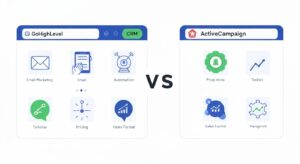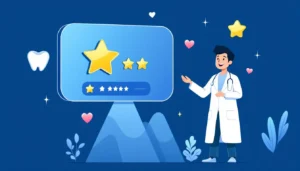Agency Revenue Pro Playbook: CRM + SaaS + Automation

Introduction
It’s never been easy to run a business. Owners can get stuck in a loop of uncertainty when they are constantly under pressure to get new clients, achieve results, and make more money. Many businesses go through the feared “feast or famine” pattern, where one month is good for business and the next is bad for money. When every new job restarts the income number, it’s hard to stay on track with growth and stability.
We need to rethink the agency model in order to find an answer. These days, the most successful businesses are the ones that use three main things together: CRM systems, SaaS products, and automation. When put together, these elements make what you might call the “agency revenue pro crm playbook”—a plan for turning chaos into order and projects into steady lines of income.
Experts in the field, like HubSpot, Harvard Business Review, and McKinsey, have long said that the keys to modern business growth are ongoing income, keeping customers, and being efficient. When companies combine CRM, SaaS, and automation, it’s not just an improvement; it’s a full plan for making money and growing.
Why Agencies Struggle with Growth
The usual way for a firm to work is based on tasks and fees. This method can bring in money, but it rarely makes things predictable. When a client or job stops, the money comes in and out, and companies have to work hard to make up the difference. Even though retainers help smooth out the ups and downs, they still tie income directly to hours spent and goals met.
Three big problems come up with this model. It gets hard to plan or spend when cash flow is uncertain. As companies try to find a balance between acquisition and performance, teams get too busy. Long-term flexibility is still hard to find because growth is directly linked to staffing levels.
Harvard Business Review says that transactional business models are risky because they don’t have a way to make money over and over again. If an organization wants to do well, it needs to stop working on one-off projects and start using systems that are stable and can grow as needed. The CRM, SaaS, and automation playbooks are where this change starts.
CRM as the Foundation of the Playbook
Building ties with clients is the first step in any agency’s growth plan that works. A CRM is more than just a list of contacts; it’s the key to keeping clients, keeping track of sales, and managing clients. Without it, companies might miss follow-ups with leads, let leads fall through the cracks, or miss chances to market.
HubSpot has said over and over that companies that use CRMs grow faster and close more deals than companies that use spreadsheets or systems that are done by hand. A CRM helps companies keep track of all the times they talk to clients, find new ones, and take advantage of every chance that comes up.
By adding a CRM to their agency model, firms get ready to handle both SaaS payments and automation. In the agency revenue pro CRM method, it becomes the command center. It makes sure that growth is planned, based on data, and possible.
SaaS as the Revenue Multiplier
SaaS turns that structure into money that you can make on a big or small scale. CRMs give you organization. Business that offer white-label CRM tools or solutions that clients can subscribe to are no longer just service providers; they are also SaaS providers. With this change, steady streams of cash will grow even if no one works there.
When people pay for software solutions, the company becomes more a part of their daily work. This makes long-term ties stronger and keeps people from leaving. A study by McKinsey found that companies with regular income plans are more stable and valuable in the market.
When it comes to businesses, SaaS makes things better. Every new deal brings in extra money every month, which keeps things calm and steady. When services are added to this two-part model, the agency turns into a mixed business that can grow without having to keep looking for new work.
Automation as the Profit Protector
Automation is the third part of the plan. It helps the company make money. Teams that are stuck on boring jobs like teaching new clients, making reports, or following up on bills that haven’t been paid cost agencies time and money. Because they don’t pay well, these jobs are a waste of time and money.
Now that CRM tools have built-in routines, this isn’t the same. Workflows take care of follow-ups, report screens are changed on their own, and payment notes are sent out without anyone having to keep an eye on them. HubSpot says that businesses that automate their tasks save time, money, and keep customers longer. It’s clear that speed has something to do with making money.
Automation saves companies’ money and gives workers more time to do more important things, like making plans and getting to know clients. This keeps prices from going up at the same rate as sales and increases the profit margins.
Bringing the Playbook Together
Automation, CRM, and SaaS are all useful on their own. The government works differently because of a single idea. The CRM is the main tool used to keep track of clients and facts. The fact that SaaS lets you make steady money makes things safer. Automation saves money because it makes things run more smoothly.
In Harvard Business Review, there is an idea called the “compounding advantage” that this method fits with. This is when all the parts work together to make progress over time. When agents follow the whole plan, they don’t just get small wins; they see huge growth.
Technology and planning should be used together for the best long-term benefits, according to McKinsey. This means that agencies must follow the plan if they want to stay competitive, not just if they want to.
Case Example: Applying the Playbook in Practice
Think about a marketing company that was about the size of a small business and only got small projects and fees. Making money wasn’t always easy, and the staff had a lot to do. When the agency used the agency revenue pro CRM plan, it changed how it did business.
The CRM kept track of everything about clients and made sure that no leads were lost. The company was able to launch a branded membership service with SaaS Mode, which quickly became a new way to make money. Every week, hours of work were saved by automating tasks that used to be done by hand.
The agency twice as much money every month, kept a lot more customers, and increased its profit rates by almost 25% in just one year. At first, it looked like the business might not be steady, but it turned out to be safe and growing. As this case shows, putting CRM, SaaS, and automation all together in one form is very useful.

Conclusion
An agency needs to think outside of the usual tasks and contracts if it wants to stay safe and make money. It will be best for people to think of CRM, SaaS, and automation as three growth bases that work together. Together, these parts make up the agency revenue pro crm playbook, a system that keeps things under control, can be expanded, and works well.
Transactional models don’t work for businesses that want to make money. Instead, companies that focus on ongoing income, customer interaction, and technology always do better than those that use transactional models. You can use this guide as a set of tools, but it’s also a plan for long-term success.
A lot of money can be made by businesses that use CRMs to keep things organized, SaaS to make regular money, and automation to move things along quickly. This means the business doesn’t have to deal with waves of good and bad times anymore. Instead, it has steady growth, higher income, and more loyal customers.
Companies that follow this plan will be the best when there is a lot of competition and customers want more. Some people might get lost if they don’t pay attention. It is clear what businesses should do if they want to make money: learn how to use CRM, SaaS, and automation tools.





